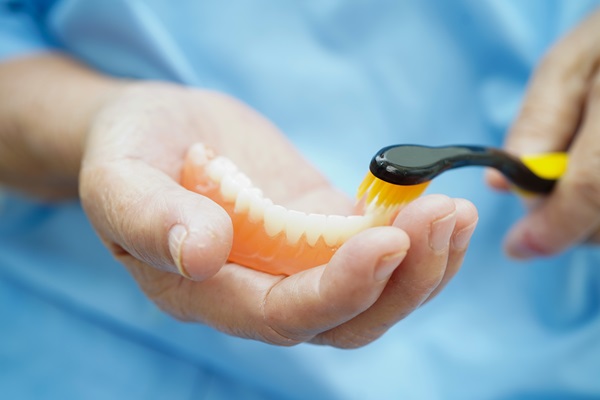Scaling and Root Planing for Gum Disease

Scaling and root planing for gum disease is an often performed dental procedure that involves cleaning deep down toward the tooth root and below the gum line to remove built-up plaque and tartar. It is a more extensive form of routine dental cleaning and often necessary when treating advanced cases of gum disease.
Treating gum disease with scaling and root planing
Minor instances of gum disease can often be treated through improvements in your at-home oral health routine and through routine dental cleanings. However, scaling and root planing is often a better solution. The following is a review of how dentists use scaling and root planing to clean the gums and treat gum disease in the long term.
What is gum disease?
Gum disease, also called periodontitis, refers to an oral infection that damages the gums and the underlying jawbone. Symptoms of gum disease include bleeding gums, gum swelling, gums that move away from teeth (gum recession), pockets between the teeth and gums, and bone loss. It is most often caused by poor oral hygiene and relatively easy to prevent with consistent oral care and regular dental visits.
Gingivitis is considered by many to be a mild form of gum disease, although some dentists separate the term from periodontitis. Gingivitis is milder and typically able to be treated through less extensive measures than scaling and root planing.
What is scaling and root planing?
Scaling and root planing is a way to treat severe cases of gum disease, particularly those that are not able to be properly addressed through routine cleanings or improvements in oral care. The procedure involves cleaning the crown of the tooth, removing plaque and tartar buildup along the gum line, and going deeper toward the tooth root and underneath the gum line to remove bacteria and plaque.
When are scaling and root planing necessary?
As mentioned, scaling and root planing is necessary for severe cases of gum disease. Some symptoms of severe gum disease that may indicate that scaling and root planing is needed include severe bleeding when pressure is placed upon the gums, abnormal swelling of the gums, bone loss in the jaw, gum recession and loose teeth. If these symptoms exist, then it is important to contact a dentist as soon as possible.
What to expect after treatment
The patient can return home after scaling and root planing. Some discomfort may exist, although it typically goes away within 24 hours and can be managed through over-the-counter pain relief medication. The dentist should also provide dietary limitations during the recovery, which may include reducing the consumption of sugar and avoiding foods that are hard to chew or sticky.
Contact our dental team to learn more about gum disease
You can reach our dental team by phone or email to learn more about gum disease treatment options, and we can explain the process of scaling and root planing to you in greater detail during a consultation visit. Our dental team is friendly and happy to address any concerns you may have about gum disease and its treatment.
Request an appointment here: https://www.michianafamilydental.com or call Michiana Family Dental at (574) 349-2073 for an appointment in our South Bend office.
Check out what others are saying about our dental services on Yelp: Gum Disease in South Bend, IN.
Recent Posts
Gum disease is an infection that causes damage to the soft tissue and bone within the mouth. There are multiple stages of gum disease, in which the soft tissues and bone become more infected. A lot of sufferers from gum disease wonder what the healing process looks like, and if it is even possible. Thankfully,…
A fractured, chipped, or broken tooth occurs when patients have a crack in the tooth. Some cracks may appear small, but others may cause a break or split within the tooth structure. Most people can suffer a tooth break, but the most common demographics include children and older adults. To fix the tooth, some patients…
Denture adjustment is a necessary procedure that must be performed if your dentures no longer fit your mouth. Whether you have partial or complete dentures, these prompt your gums and soft tissues to adjust. Once the dentures have settled, they will also be likely to change over time. You may experience difficulty chewing or feel…
Using custom-fit plastic trays, Invisalign® treatments are a restorative and corrective treatment for several dental problems. As an orthodontic solution, clear aligners are often compared to a treatment using metal braces. Corrective measures typically address crooked or misaligned teeth, and provided the patient wears the trays for the prescribed length of time, the results are…


